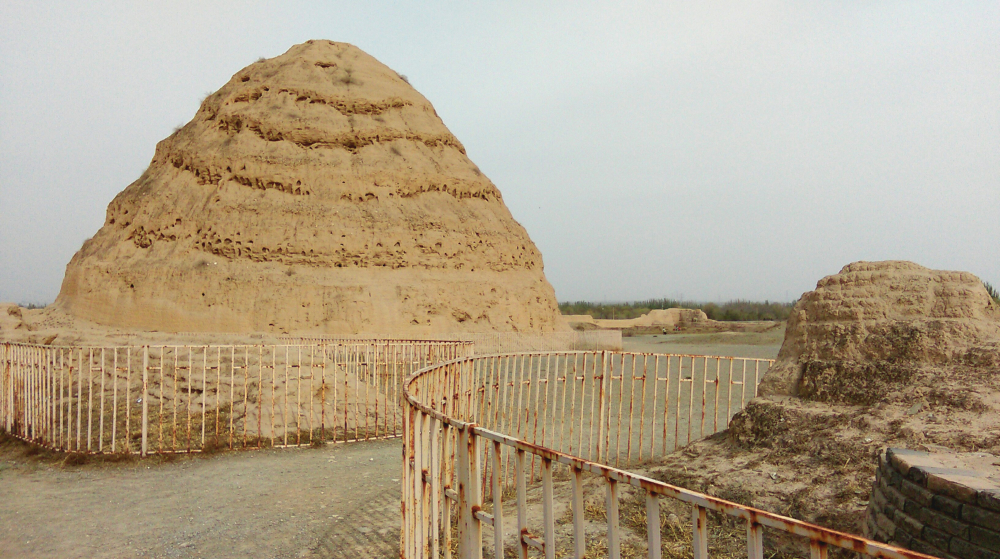
Far out in the western regions of China’s Gobi desert lie the remnants of a lost civilisation. This once-thriving and artistic civilisation – the Kingdom of Western Xia – was abruptly and permanently destroyed by the invading forces of Genghis Khan in 1227 AD.
All that remains of this lost Kingdom is a series of Xia Imperial Tombs of its Emperors and lessor priests, scattered over an 80-square-kilometre area. These giant beehive-shaped pyramids dot the valleys under the shadow of the magnificent nearby Helan Mountains.
This large area also contains the burial tombs of 253 lesser royals. Throughout this burial area, ongoing archaeological excavations are continually unearthing large numbers of exquisite statues, carvings and other artefacts. In some areas shattered pottery fragments can be found lying abandoned and exposed on the ground, as if calling to be picked up so the stories of their lost owners may be finally told.
As I walk among the ochre-coloured rammed-earth pyramids, I’m sure I feel them beckoning me to come closer to hear their stories too. The layout of the tombs is patterned after celestial bodies, we are told. It’s truly a mystical place at the end of a road less travelled. Come and see and feel this wonderment for yourself.

These are the best-preserved Imperial burial mounds in China due to the extremely dry weather conditions and their remote location.
Grave robbers, long ago, looted the main Imperial mounds of their caches of gold and other precious metals, gems and other valuables. However they left many of the statues, hieroglyphics and other works of art untouched. Many of these items have now found safe haven in the new Yinchuan Museum nearby, where I have spent some time.
My Chinese guide and host family member, Helen, proudly tells me how she is a descendant of these Xia Emperors. She explains that when Genghis Khan ordered the slaughter of every man, woman and child of the Xia Kingdom, several escaped into the desert and found refuge in small villages. Here, they changed their family names in order to dissociate themselves with the Xia people. These escapees and their descendants were gradually absorbed into the dominant ethnic group, thereby erasing any further trace of the Xia Kingdom.
This part of China is dripping with history, both ancient and not-so-ancient. It was here too, that Mao’s famous Long March came to an end. It started in southern China with 300,000 followers, but only 30,000 survived. Exhausted due to lack of food and sickness, it was here in the land of the lost Kingdom of Xia that China’s still-ruling Communist Party first consolidated itself amongst the locals to become the powerhouse that it is today.
But this is a story for another day.